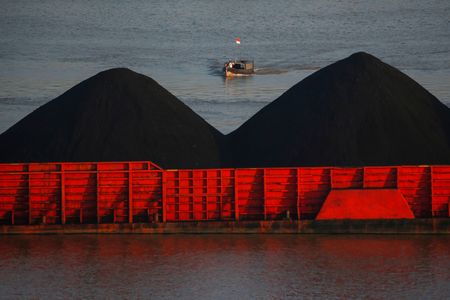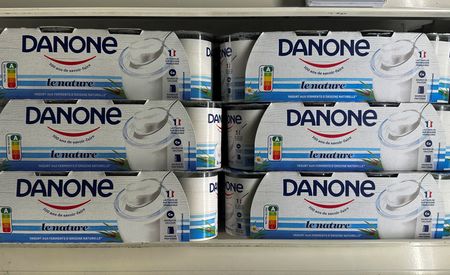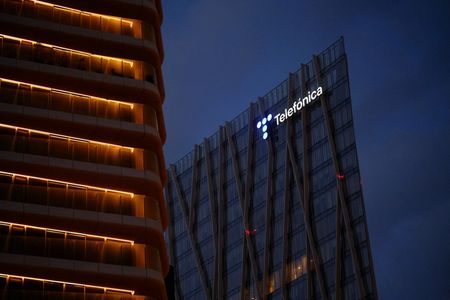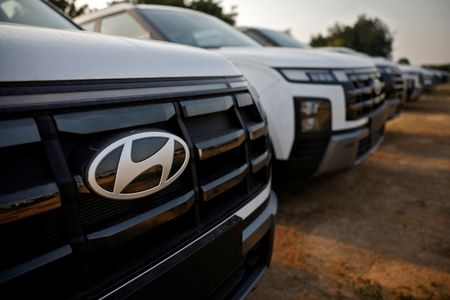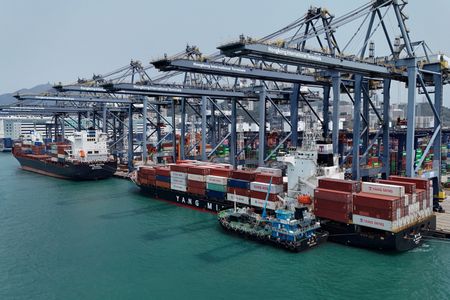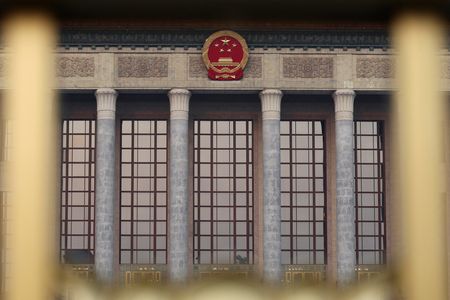By Sudarshan Varadhan, Fransiska Nangoy and Hongmei Li
SINGAPORE/JAKARTA (Reuters) -Indonesia’s coal producers are trapped between the rock of falling exports and a hard place of peaking demand from the nickel smelters that had been driving the fuel’s consumption domestically, creating a growth conundrum for the companies.
Coal is Indonesia’s biggest export earner, making $30.49 billion in 2024, and plunging revenues from the sector would have disproportionately bad effects on the country’s commodity-dependent economy, Southeast Asia’s biggest.
With lower profit margins leading to dropping share prices, coal’s woes point to a future of workforce cuts, slowing output and fewer contributions to government coffers at a time when President Prabowo Subianto is starting up ambitious spending plans.
Electricity-hungry smelters, most of which process nickel, have been the fastest growing demand source for Indonesian coal.
However, that demand will peak at 84.2 million tons by 2026 and fall to 78.6 million tons in 2027, according to the Indonesian Coal Miners Association (ICMA), because of nickel industry overcapacity and the potential implementation of stricter emissions regulations.
At the same time, Indonesian coal exports through June this year are down 12.6% from a year earlier by volume, data from Kpler showed, with government data showing the value of exports through May down 19.1%.
Exports to China, the country’s biggest coal buyer, fell by 30% from a year earlier in June, Chinese government data showed, as it relies on more domestic output and takes advantage of low prices to import higher quality coal from elsewhere.
“Indonesian coal miners are taking steps to diversify their business to hedge against a steeply falling demand for low- to mid-grade coal,” said Manish Gupta, senior analyst for Asia thermal coal research at Wood Mackenzie.
“We don’t expect the growth in captive (plant) addition from nickel smelting to continue going forward,” he said, using the industry jargon for power plants connected to nickel smelting sites, known as captive plants.
Indonesia’s expanding nickel smelting industry had propelled a three-fold increase in Indonesia’s captive coal-fired capacity to 16.6 gigawatts (GW) in 2024, from 5.5 GW in 2019, according to the coal plant tracker from Global Energy Monitor.
But as nickel prices have fallen due to increasing overcapacity and lower stainless steel imports by China, Indonesian smelters have idled some facilities.
In June, smelting inactivity at Indonesian nickel pig iron operations was 9% higher than a year earlier, the highest in two years, mainly as the country’s biggest nickel producer Tsingshan Holdings likely halted output at its joint venture plants at Morowali Industrial Park, data from geospatial analytics firm Earth-i showed.
H. Kristiono, the deputy chairman of the ICMA, which includes Adaro, Bayan and Bukit Asam as well as foreign traders Adani Global and Trafigura, still expects the smelter industry’s coal-fired power capacity to grow despite the underutilisation, although at a slower rate than previously estimated and still doubling by the end of the decade.
Coal will remain the dominant power fuel source for the nickel sector because of challenges to switching to other sources, little progress connecting sites to the national grid and Indonesia’s resistance to stricter regulations.
About 6 GW of capacity, or 46% of all coal-fired power plants under construction in Indonesia, are planned for Central Sulawesi and North Maluku provinces, where nickel processing is concentrated, according to the Global Coal Monitor.
COMPANIES SQUEEZED
Overall though, the combination of lower exports and slower captive power demand growth is pressuring Indonesia’s coal producers who are also being squeezed by higher government payments and rising fuel costs.
Profit margins at major miner Bayan has fallen for three years and state-owned Bukit Asam’s first quarter margins fell below the annual averages for every year since 2010, LSEG data showed, due to increased royalty payments and rising machinery costs.
Shares of Indonesia’s top five coal miners by output are down 1% to 18% this year, underperforming broader market growth of nearly 7%. Adaro is down 18%, while Golden Energy Mines and Bukit Asam have lost more than a tenth of their value since the beginning of this year.
The companies did not respond to requests seeking comment.
In April, Indonesia announced new royalty rates for coal, nickel and other minerals to support Prabowo’s higher spending. While some big coal miners saw their effective royalty rate drop, others faced a 1 percentage point increase from April.
In 2024, royalties made up 16% of the average coal producer’s cost structure, the highest among major Indonesian commodities, according to Australia-based Energy Shift Institute.
Jakarta is also considering export duties on coal shipments for certain price levels to boost state coffers, at a time when miners already face higher fuel costs due to the removal of biodiesel subsidies.
Some coal miners looking to weather the downturn are exploring diversification options, but progress has been slow, analysts say. Bukit Asam, for example, said in May it is considering a $3.1 billion investment in a plant to convert coal to synthetic natural gas.
“Producers are eyeing a mix of downstream options, renewables opportunities, or investments in alternate commodities,” Wood Mackenzie’s Gupta said.
(Reporting by Sudarshan Varadhan, Hongmei Li and Fransiska Nangoy, additional reporting by Ashitha Shivaprasad; Editing by Christian Schmollinger)


